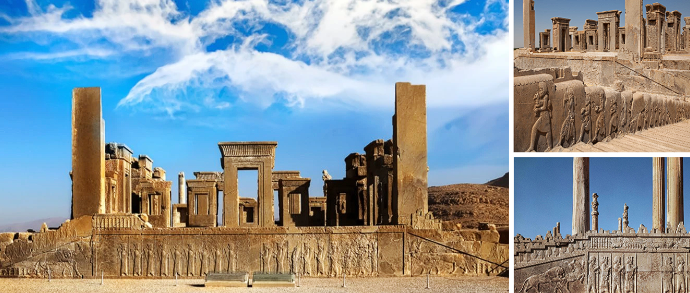The Persians
1/8
There's no tags or description
Looks like no tags are added yet.
Name | Mastery | Learn | Test | Matching | Spaced |
|---|
No study sessions yet.
9 Terms
Persia
one of the oldest countries in the world
migrated from the vast Eurasian Steppes and occupied the plateau bordered by Mesopotamia and Asia Minor
Pasargadae
Pasargadae was the old capital of the empire, established by Cyrus the Great. The royal complex is remarkable for its spaciousness: palace, audience hall, altars, and pavilions, all distant from each other yet integrated into a parklike setting with trees, watercourses, and gardens.
Fire Temples
Central to the religion of the Persians, Zoroastrianism, fire temples were square towers built of well-bonded stone with mock loopholes and windows in dark materials; inside, the sacred fire was kept alight by the Magi, who belonged to a Median tribe specially trained in the study and practice of religious ritual.
The Pasargadae Gardens
The gardens provided the earliest known example of the Persian fourfold garden design that featured waterways and fountains to create a grid pattern, a tradition that would later greatly influence Islamic, as well as European garden design.
The garden's purpose was, and is, to provide a place for protected relaxation in a variety of manners: spiritual and leisurely, essentially a paradise on earth.
The Tomb of Cyrus the Great
The tomb is a gabled enclosure that sits on a six-leveled stepped plinth. The entire edifice is of white limestone. According to historical accounts, the interiors held Cyrus’ golden sarcophagus, surrounded by treasures. The tomb is also virtually earthquake-resistant.
Persepolis
the “City of the Persians,”
capital of the Persian empire after moving from Pasargadae and was established by Darius the Great in 518 BCE
pported four groups of structures: royal residences, a treasury, ceremonial palaces, and fornications
The Apadana Palace
large ceremonial building and is the largest in the complex, completed by Xerxes I as an audience hall to receive guests coming to pay tribute.

Hall of a Hundred Columns
The second-largest building in the complex, the building served as the throne hall and was completed by Artaxerxes I.
It was used mainly for receptions for military commanders and representatives of all the subject nations of the empire and later served as an imperial museum.
The Fall of the Achaemenid Empire
The Achaemenid Empire remained stable under later rulers until it was conquered by Alexander the Great during the reign of Darius III. Alexander, who styled himself as Darius’ successor, is often referred to as the last monarch of the Achaemenid Empire.